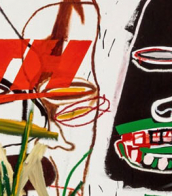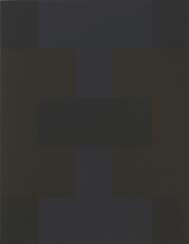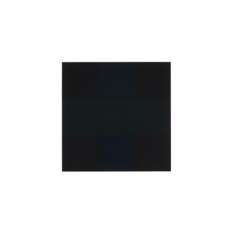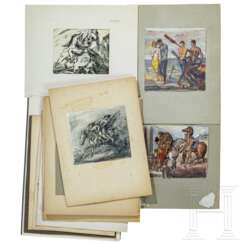reinhardt

Adolph Dietrich Friedrich Reinhardt was an abstract painter active in New York for more than three decades. He was a member of the American Abstract Artists (AAA) and part of the movement centered on the Betty Parsons Gallery that became known as abstract expressionism. He was also a member of The Club, the meeting place for the New York School abstract expressionist artists during the 1940s and 1950s. He wrote and lectured extensively on art and was a major influence on conceptual art, minimal art and monochrome painting. Most famous for his "black" or "ultimate" paintings, he claimed to be painting the "last paintings" that anyone can paint. He believed in a philosophy of art he called Art-as-Art and used his writing and satirical cartoons to advocate for abstract art and against what he described as "the disreputable practices of artists-as-artists".
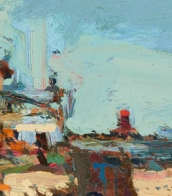

Adolph Dietrich Friedrich Reinhardt was an abstract painter active in New York for more than three decades. He was a member of the American Abstract Artists (AAA) and part of the movement centered on the Betty Parsons Gallery that became known as abstract expressionism. He was also a member of The Club, the meeting place for the New York School abstract expressionist artists during the 1940s and 1950s. He wrote and lectured extensively on art and was a major influence on conceptual art, minimal art and monochrome painting. Most famous for his "black" or "ultimate" paintings, he claimed to be painting the "last paintings" that anyone can paint. He believed in a philosophy of art he called Art-as-Art and used his writing and satirical cartoons to advocate for abstract art and against what he described as "the disreputable practices of artists-as-artists".


Adolph Dietrich Friedrich Reinhardt was an abstract painter active in New York for more than three decades. He was a member of the American Abstract Artists (AAA) and part of the movement centered on the Betty Parsons Gallery that became known as abstract expressionism. He was also a member of The Club, the meeting place for the New York School abstract expressionist artists during the 1940s and 1950s. He wrote and lectured extensively on art and was a major influence on conceptual art, minimal art and monochrome painting. Most famous for his "black" or "ultimate" paintings, he claimed to be painting the "last paintings" that anyone can paint. He believed in a philosophy of art he called Art-as-Art and used his writing and satirical cartoons to advocate for abstract art and against what he described as "the disreputable practices of artists-as-artists".


Adolph Dietrich Friedrich Reinhardt was an abstract painter active in New York for more than three decades. He was a member of the American Abstract Artists (AAA) and part of the movement centered on the Betty Parsons Gallery that became known as abstract expressionism. He was also a member of The Club, the meeting place for the New York School abstract expressionist artists during the 1940s and 1950s. He wrote and lectured extensively on art and was a major influence on conceptual art, minimal art and monochrome painting. Most famous for his "black" or "ultimate" paintings, he claimed to be painting the "last paintings" that anyone can paint. He believed in a philosophy of art he called Art-as-Art and used his writing and satirical cartoons to advocate for abstract art and against what he described as "the disreputable practices of artists-as-artists".
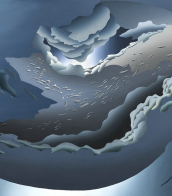

Adolph Dietrich Friedrich Reinhardt was an abstract painter active in New York for more than three decades. He was a member of the American Abstract Artists (AAA) and part of the movement centered on the Betty Parsons Gallery that became known as abstract expressionism. He was also a member of The Club, the meeting place for the New York School abstract expressionist artists during the 1940s and 1950s. He wrote and lectured extensively on art and was a major influence on conceptual art, minimal art and monochrome painting. Most famous for his "black" or "ultimate" paintings, he claimed to be painting the "last paintings" that anyone can paint. He believed in a philosophy of art he called Art-as-Art and used his writing and satirical cartoons to advocate for abstract art and against what he described as "the disreputable practices of artists-as-artists".
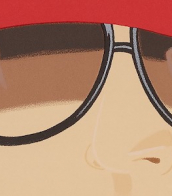

Adolph Dietrich Friedrich Reinhardt was an abstract painter active in New York for more than three decades. He was a member of the American Abstract Artists (AAA) and part of the movement centered on the Betty Parsons Gallery that became known as abstract expressionism. He was also a member of The Club, the meeting place for the New York School abstract expressionist artists during the 1940s and 1950s. He wrote and lectured extensively on art and was a major influence on conceptual art, minimal art and monochrome painting. Most famous for his "black" or "ultimate" paintings, he claimed to be painting the "last paintings" that anyone can paint. He believed in a philosophy of art he called Art-as-Art and used his writing and satirical cartoons to advocate for abstract art and against what he described as "the disreputable practices of artists-as-artists".


Adolph Dietrich Friedrich Reinhardt was an abstract painter active in New York for more than three decades. He was a member of the American Abstract Artists (AAA) and part of the movement centered on the Betty Parsons Gallery that became known as abstract expressionism. He was also a member of The Club, the meeting place for the New York School abstract expressionist artists during the 1940s and 1950s. He wrote and lectured extensively on art and was a major influence on conceptual art, minimal art and monochrome painting. Most famous for his "black" or "ultimate" paintings, he claimed to be painting the "last paintings" that anyone can paint. He believed in a philosophy of art he called Art-as-Art and used his writing and satirical cartoons to advocate for abstract art and against what he described as "the disreputable practices of artists-as-artists".


Adolph Dietrich Friedrich Reinhardt was an abstract painter active in New York for more than three decades. He was a member of the American Abstract Artists (AAA) and part of the movement centered on the Betty Parsons Gallery that became known as abstract expressionism. He was also a member of The Club, the meeting place for the New York School abstract expressionist artists during the 1940s and 1950s. He wrote and lectured extensively on art and was a major influence on conceptual art, minimal art and monochrome painting. Most famous for his "black" or "ultimate" paintings, he claimed to be painting the "last paintings" that anyone can paint. He believed in a philosophy of art he called Art-as-Art and used his writing and satirical cartoons to advocate for abstract art and against what he described as "the disreputable practices of artists-as-artists".
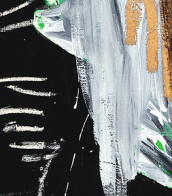

Adolph Dietrich Friedrich Reinhardt was an abstract painter active in New York for more than three decades. He was a member of the American Abstract Artists (AAA) and part of the movement centered on the Betty Parsons Gallery that became known as abstract expressionism. He was also a member of The Club, the meeting place for the New York School abstract expressionist artists during the 1940s and 1950s. He wrote and lectured extensively on art and was a major influence on conceptual art, minimal art and monochrome painting. Most famous for his "black" or "ultimate" paintings, he claimed to be painting the "last paintings" that anyone can paint. He believed in a philosophy of art he called Art-as-Art and used his writing and satirical cartoons to advocate for abstract art and against what he described as "the disreputable practices of artists-as-artists".


Adolph Dietrich Friedrich Reinhardt was an abstract painter active in New York for more than three decades. He was a member of the American Abstract Artists (AAA) and part of the movement centered on the Betty Parsons Gallery that became known as abstract expressionism. He was also a member of The Club, the meeting place for the New York School abstract expressionist artists during the 1940s and 1950s. He wrote and lectured extensively on art and was a major influence on conceptual art, minimal art and monochrome painting. Most famous for his "black" or "ultimate" paintings, he claimed to be painting the "last paintings" that anyone can paint. He believed in a philosophy of art he called Art-as-Art and used his writing and satirical cartoons to advocate for abstract art and against what he described as "the disreputable practices of artists-as-artists".
